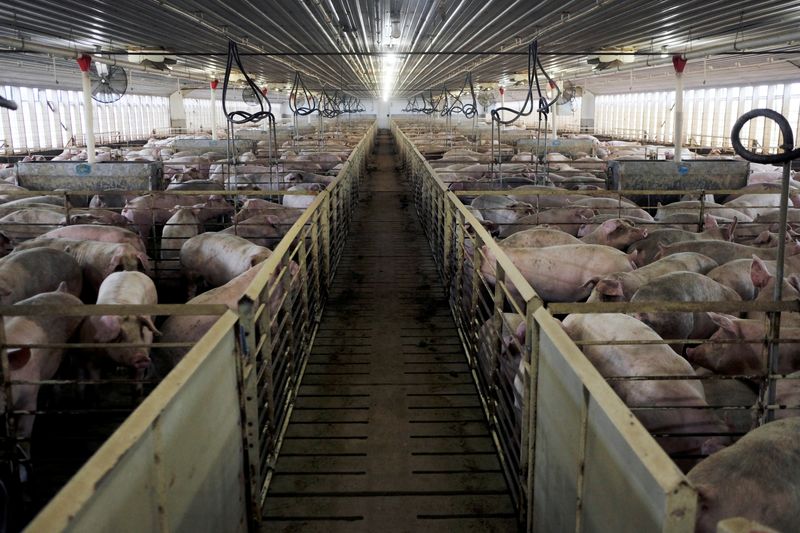This post was originally published on this site
https://i-invdn-com.akamaized.net/trkd-images/LYNXNPEG8L1WI_L.jpg
(Reuters) – U.S. pork exports to China have surged beyond pre-trade war levels, led by higher shipments from Brazil’s JBS SA (SA:JBSS3) and China’s WH Group Ltd (HK:0288), owner of Smithfield Foods, according to Panjiva, the research unit of S&P Global Market Intelligence.
JBS may have shipped 370% more U.S. pork to China this year through Aug. 31 than at the same period in 2017, while exports linked to WH Group rose 90.1%, Panjiva said Tuesday. Meanwhile, Springdale, Arkansas-based Tyson Foods Inc (N:TSN) shipped 7.3% less pork to China compared to the same period in 2017.
U.S. President Donald Trump in April ordered U.S. meat processing plants to remain open to ensure domestic meat supplies despite COVID-19 outbreaks among workers.
JBS told Reuters in April, when plants across the country were closing due to outbreaks, that it reduced exports to focus on meeting U.S. demand.
JBS and Smithfield did not immediately respond to requests for comment on Tuesday.
Democratic U.S. Senators Elizabeth Warren and Cory Booker in June asked meat companies how much they exported to China during the pandemic.
JBS said in response that its total market share of U.S. pork to China had been less than 10%. Exports are comprised largely of products like pigs’ feet and livers that American consumers generally do not eat, JBS said.
Smithfield told the senators it would not give preference to foreign customers.
China agreed to import a record $36.5 billion in U.S. farm goods in the Phase 1 trade deal signed in January, with pork expected to be key to reaching the mark.
Chinese demand is seen rising further after Beijing blocked imports from Germany, which has suffered an outbreak of a pig disease.
U.S. meat production has recovered as plants have reopened after being hit by COVID-19. Frozen pork supplies in cold-storage facilities reached a three-month high in August, according to the U.S. Department of Agriculture.

